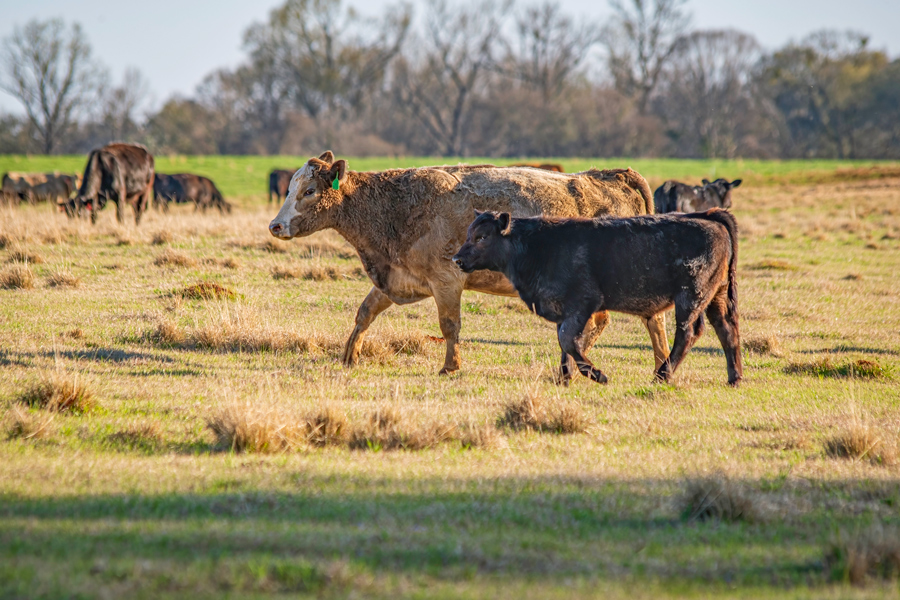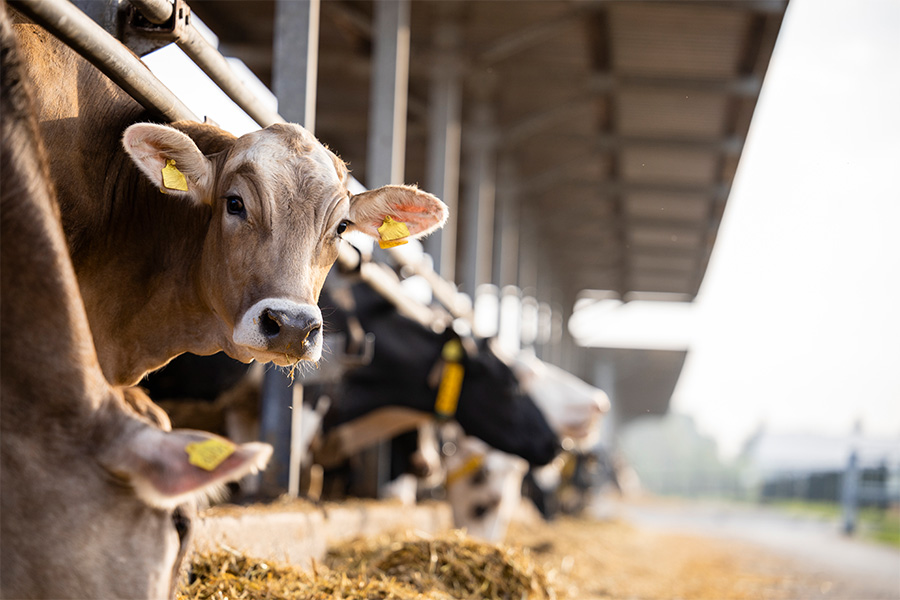Beef
-

Beef cattle evaluation is important for all segments of the cattle industry. Visual evaluation allows you to compare animals not only for various economically viable traits, such as growth performance and potential carcass merit, but also for traits that are indicators of functionality in each production environment, such as skeletal structure. These traits are often difficult to quantify and are commonly considered convenience traits as they do not have a direct impact on income. Still, traits such as these can have a significant management and economic impact across multiple generations of offspring.
This publication is intended to help the reader develop visual evaluation skills for cattle with particular emphasis on breeding cattle. Visual evaluation combined with industry best management practices is key to overall success in selecting quality replacements.
Jason Duggin and Dylan Davis
|
-

C 904
Freeze Branding Cattle
To improve efficiency, cattle producers should place a high priority on identifying individual cattle and maintaining accurate records. One type of permanent identification is branding.
Lawton Stewart
|
-

B 1371
UGA Basic Balancer
The UGA Basic Balancer is a spreadsheet-based decision aid to formulate basic rations for beef cattle operations. The nutrient requirements used in this program are adapted from guidelines presented in the 2000 National Research Council publication “Nutrient Requirement of Beef Cattle: Seventh Revised Edition: Update 2000.” The UGA Basic Balancer program consists of a feed library, least cost feedstuff analyzer, a ration analyzer, and sections to balance rations for brood cows, bulls, heifers, and stockers.
The UGA Basic Balancer is intended to be a simple ration balancer that addresses energy (TDN) and crude protein (CP) requirements of cattle. This program does not take into consideration other requirements or limitations (for example, micro minerals, fat level, effective fiber, nonstructural carbohydrates, etc.). Before feeding any rations developed in this program, contact your local Extension office to address any potential problem.
Jacob R. Segers, Lawton Stewart, and Lisa Baxter
|
-

The way exhibitors present cattle has changed tremendously in a century. Youth beef shows often have showmanship divisions that are very competitive. Being a showmanship division winner is a great achievement and worthy goal. New exhibitors should study and practice these basic skills for the best chance at success.
Carole Knight, Heather K. Shultz, Jason Duggin, and Tim Street
|
-

AP 130-1-07
2023 Beef Cattle Outlook
1. Severe drought elevated cow slaughter in 2022. With fewer cows to slaughter in 2023, cattle prices are expected to increase. 2. China could become the largest export destination for U.S. beef in 2023. 3. As per capita beef consumption grows, there also will be a growing interest in plant-based alternatives.
Amanda R Smith
|
-

This publication highlights the role of selenium in animal nutrition; selenium concentration and distribution in soils and feedstuffs (grains and forages) produced in various parts of the United States and in Georgia; disorders resulting from Selenium deficiency or toxicity; various methods of selenium supplementation; and recommendations for selenium management in Georgia. This publication is intended to serve as an educational resource for university researchers and Extension specialists, county Extension agents and livestock, forage and feed producers, among others.
Lawton Stewart and Uttam K. Saha
|
-

C 1207
Halter Training Beef Cattle
If you or someone you know is planning to halter train beef cattle, remember that the calf must be coached—it will not instinctively know what to do. Good coaching equals better results. This circular focuses on how to be a good coach during the halter training process for beef cattle.
Carole Knight, Justin Hand, and Jason Duggin
|
-

Feeder cattle buyers, marketers, and producers are able to communicate the potential growth and carcass merit potential of individual and grouped calves using the USDA Feeder Cattle Grading Standards. Producers that are aware of these standards and their use in predicting carcass value are better suited to making breeding and management decisions to improve the value of future calf crops.
Lawton Stewart and Jason Duggin
|
-

Livestock shows and purebred sales often require an ear tattoo as a form of permanent identification. If the rules of your next event require a tattoo, it is imperative for it to be accurate and easily read. Mistakes or improper application of tattoos can be very frustrating situations for everyone involved. Illegible, infected or incorrect digits are unfortunately common. Following a few key steps can help improve the effectiveness of tattoo application and the ease with which they can be read. So, let’s make sure that it is done right the first time. Please remember also to check your tattoos often.
Deron Rehberg, Carole Knight, Heather K. Shultz, Jason Duggin, and Pedro Fontes
|